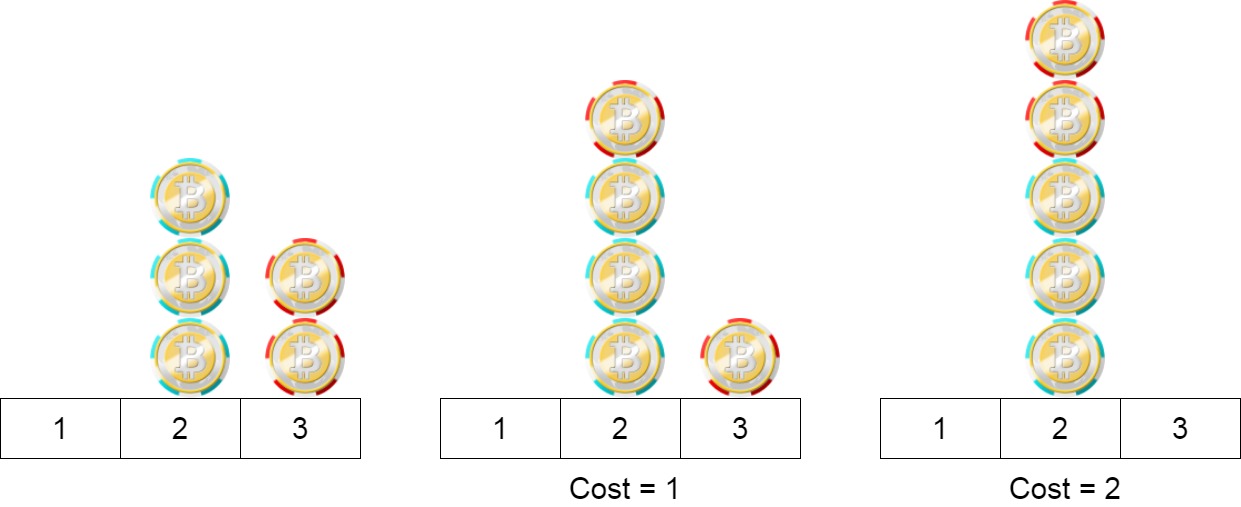Problem
We have n chips, where the position of the ith chip is position[i].
We need to move all the chips to the same position. In one step, we can change the position of the ith chip from position[i] to:
position[i] + 2orposition[i] - 2withcost = 0.position[i] + 1orposition[i] - 1withcost = 1.
Return the minimum cost needed to move all the chips to the same position.
Example 1:

1 | Input: position = [1,2,3] |
Example 2:

1 | Input: position = [2,2,2,3,3] |
Example 3:
1 | Input: position = [1,1000000000] |
Constraints:
1 <= position.length <= 1001 <= position[i] <= 10^9
Analysis
这道题目是非常典型的操作类题目。之前的题解中我也有提到过解决这类问题的方法,要优先考虑巧解,因为如果一步一步操作的话,往往会有超时的问题。我们先来看题目的背景:chip散落在不同的位置,移动偶数个位置是不需要花费cost;移动奇数个位置就需要消费,每动一次花费一个cost。
其实这个题目的条件背后隐藏着一个规律,就是chip从一个位置到另一个位置,要么不用花费cost(偶数个位置不需要花费),要么花费1(奇数个位置可以先移动偶数个位置,最后一个移动一下就可以)。所以题目虽然说最后所有的chip要移动到同一个位置,实际上都是奇数位置的相当于是同一个位置,偶数位置也相当于同一个位置,所以答案也就呼之欲出了:占少数位置的移动到占多数位置的。
Solution
确定思路之后,这道题目的coding非常简单了,统计一奇数位置的个数,然后占少数的移动,每个chip都花费一个cost,最后计算出总数即可。
Code
1 | class Solution { |
Summary
这类题目一般都需要巧解,面对这类型的题目第一时间不是去考虑算法,而是找到突破口,题目给出的几个example也算是比较有代表性,尤其是example3有很强的指导性,相信这类题目碰见几次之后就会有感觉了。这道题目的分享到这里,谢谢!

